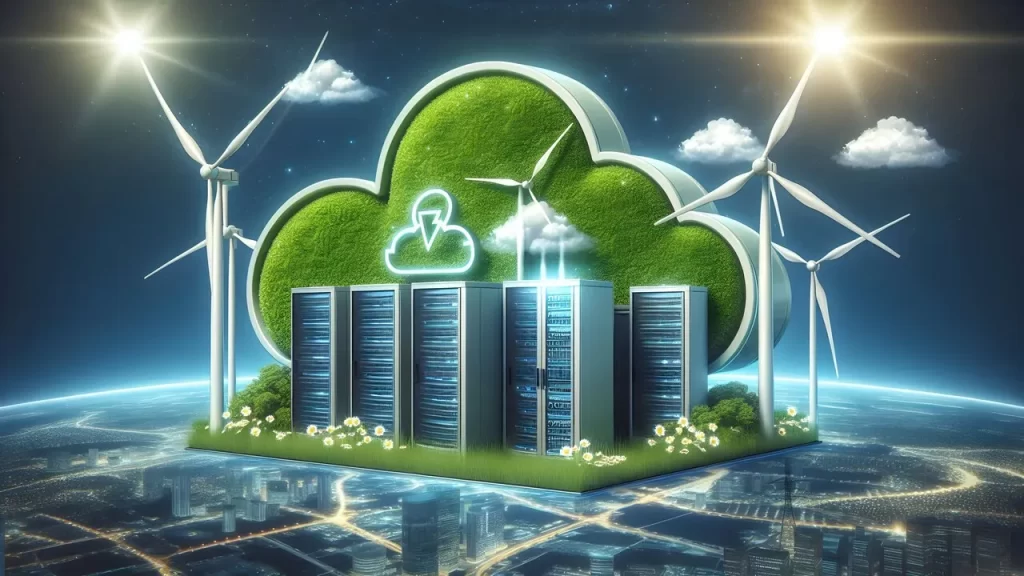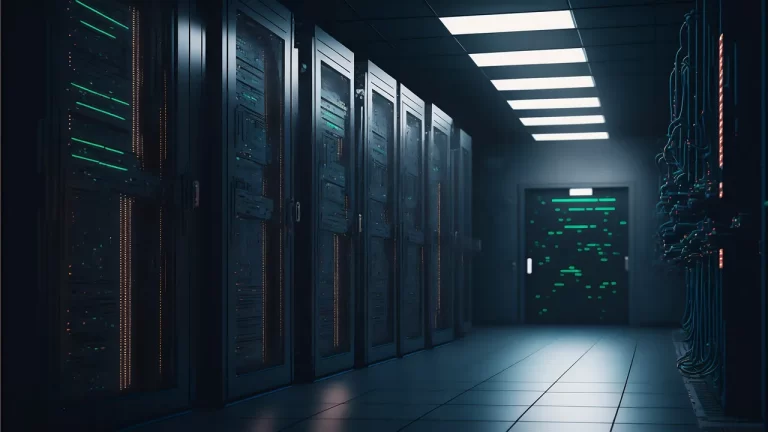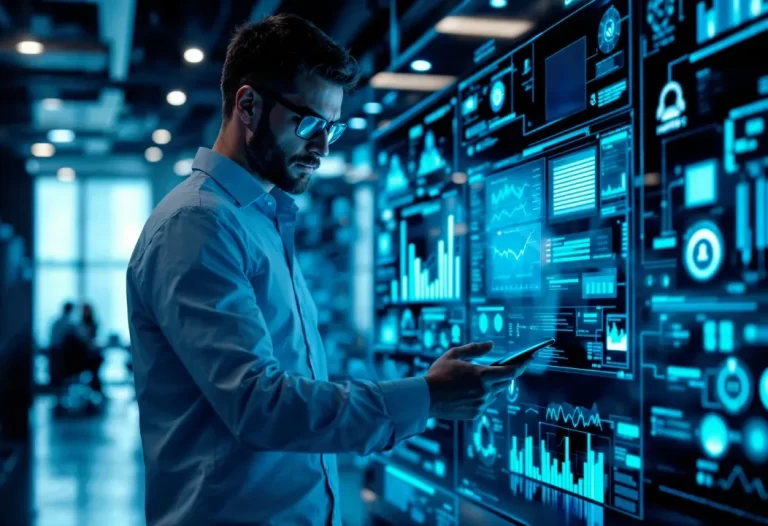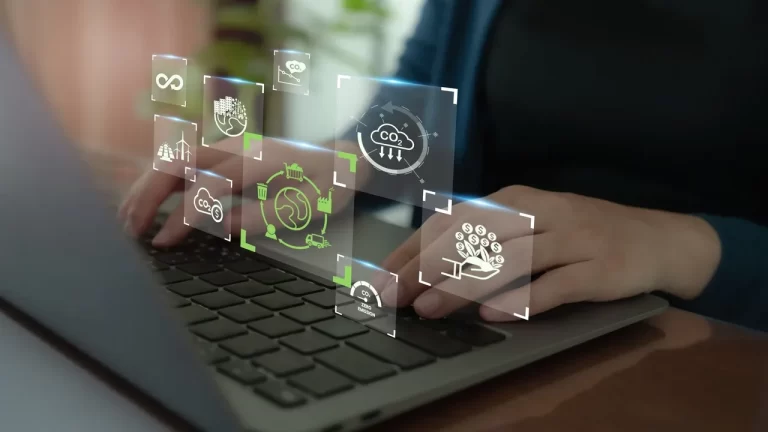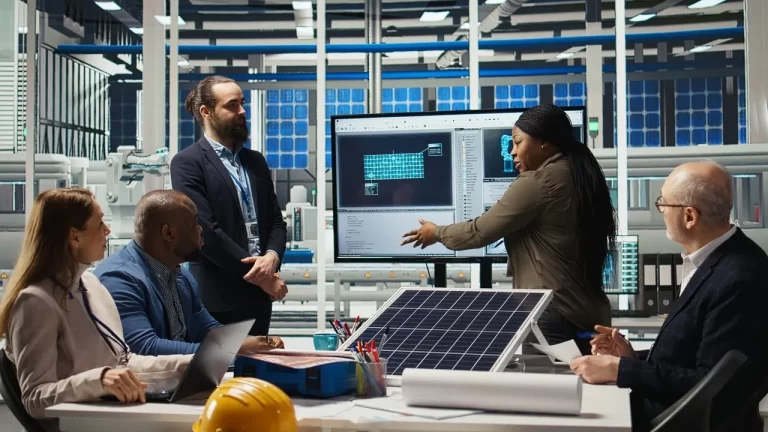As the digital world grows, there is a demand for storage and management facilities to run our connected lives. These features are known as data centers, which are powering websites, cloud services, mobile apps, artificial intelligence, and more. However, this increases the usage of data, which comes at a cost: high energy use and Also in an increase in carbon emissions. As a result, Sustainability has become an important focus for the data center industry that demands more environmentally responsible services from businesses and governments.
In recent years, there have been big improvements in data center services to handle environmental issues. They are developing further by using environmentally friendly energy, energy-efficient cooling systems, and working to cut down on electronics waste.
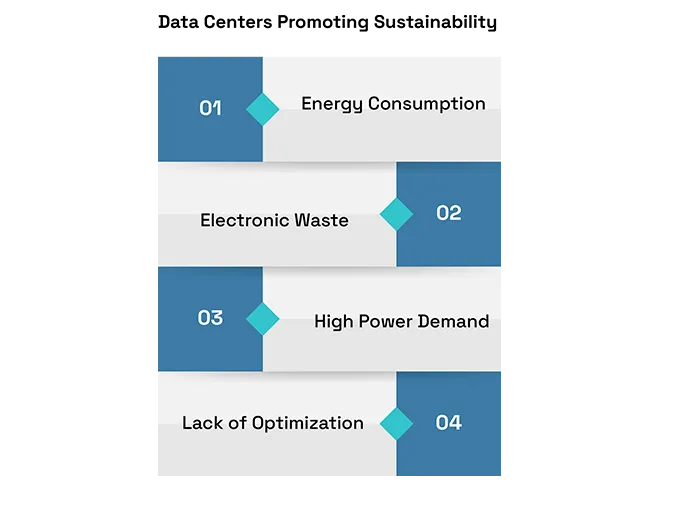
What does Sustainability Mean in Terms of Data Centers?
It is important to know these things about data centers before we consider sustainability. Important IT devices found in a data center that include servers, storage systems and networking devices. They combine their efforts to manage, store, and transfer huge amounts of digital data all over the world. The increase of cloud computing, artificial intelligence, and data-driven services has resulted in a fast increase in demand for data center services.
As this need increases, organizations must become more responsible. What are data centers trying to become more sustainable? It means using fewer resources while being efficient and performing. This means using renewable energy to reduce electricity and water use, better use of air space, and recycling expired tools. Sustainability is no longer a trend in this industry; It matters the most in this industry. Organization using sustainable methods to cut their usage of greenhouse gas, and these methods make them more attractive to customers.
Energy Efficiency: First Step Toward Greener Data Centers
Energy efficiency is located at the heart of sustainable data center infrastructure. Traditionally, the data centers utilize large amounts of electricity and cool their hardware, resulting in a lot of energy. However, improving data center optimization techniques is now making it possible to execute these features more easily. The cooling systems have become quite developed which are moving away from more advanced methods such as free cooling from traditional air conditioning units, which use air, or liquid cooling, which directly absorbs heat from the server.
In addition to cooling innovations, many data centers are embracing virtual data centre technology. By virtualizing workloads, companies can run multiple applications on a single server, drastically reducing the number of physical machines required and, in turn, saving energy. Efficient layouts, airflow management, and the use of energy-efficient power supplies and processors also contribute to a greener operation. A common measure of energy efficiency in this industry is Power Usage Effectiveness (PUE)—a lower PUE means less energy is wasted on non-computing functions. These strategies are helping both small and hyperscale cloud data center providers optimize performance while reducing their environmental impact.
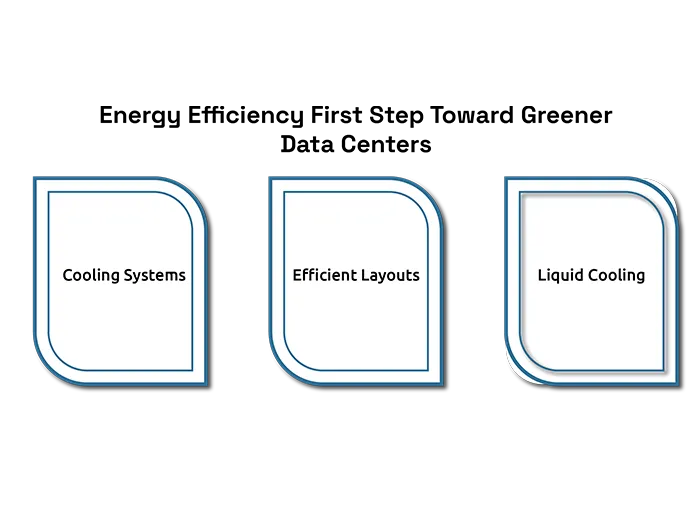
Renewable Energy Adoption in Data Center Operations
The impressive sustainability approaches in the data center industry is an investment in renewable energy. Depending on coal or gas-powered electricity, many organizations are now strengthening their data centers with clean sources like solar, wind, and hydroelectric energy. This change is not only helping to minimize carbon use but is also becoming a major difference in today’s competitive market. According to recent market trends and news, tech giants are leading this field- Microsoft AI Data Center spending, for example, includes durable energy infrastructure, and billions allocated for long-term green power agreements have been included.
Beyond major players, even smaller providers are following suit by purchasing clean energy through Power Purchase Agreements (PPAs) or installing on-site solar panels and wind turbines. Some are integrating with smart grids to improve energy distribution and reliability. The increase in cloud colocation pricing models is influencing customer decisions based on whether the feature uses renewable energy or traditional power sources. As sustainability becomes a decision-making factor for customers, renewable-operated data center services are receiving strong market appeal. This trend is beneficial not only for the planet but also for long-term operating costs and brand prestige.
Waste Reduction and Recycling in Data Centers
Energy usage is another major environmental challenge for data centers is waste, especially electronic waste or e-waste from old servers, batteries, cooling units, and cables. With frequent hardware upgrades and convenience extensions, the amount of waste generated can be significant. To address this, sustainable data center solutions now highlight recycling and responsible disposal. Many companies are adopting modular hardware and servers.
In addition, water conservation is an increasing priority, especially for facilities in areas facing water shortages. Traditional cooling methods frequently use large versions, but the new design includes closed-loop systems or air-based cooling to significantly minimize the use of water. During the data center construction, many organizations are now selecting sustainable materials and looking for green building certificates such as LEED (Leadership in Energy and Environmental Design). These practices not only reduce environmental impact but also support a circular economy by extending the lives of materials and minimizing landfill contributions.
Innovations and Future Trends Driving Sustainability
Technology is playing a central role in running the next wave of sustainable data centers. For example, data center automation software is being used for monitoring and optimization of energy use in real time. This software, often powered by artificial intelligence, can adjust cooling systems, manage workloads, and reduce idle energy consumption more efficiently than human operators. As Microsoft AI Data Center spending shows, automation and intelligent infrastructure are the necessary investments for the creation of green features of the next generation.
Looking forward, innovations such as immersion cooling, where servers are submerged in non-conducting fluids, are expected to reduce energy needs. Modular and Edge Data Centers, distributed features that are placed close to end-users-are also emerging as an energy-efficient option for traditional hyperscale models. Many companies now aim to meet strict environmental standards and safety certificates during new data center construction projects. With governments launching encouragement for green building and energy efficiency, sustainable data centers are expected to accelerate the trend towards data center infrastructure. As the industry matures, what is data center is may expand to include not just computing capabilities, but also environmental impact and carbon footprint.
Conclusion
The change towards sustainability in data centers is more than a trend – this is an important transformation. With the increase of climate concerns and increasing digital demand, modern data center solutions should be efficient, clean, and responsible. Reducing energy usage and adding renewable power sources, and reducing waste production. Increasing automation is just one of the ways data centers are now playing a responsible role in caring for the environment for digital life.

